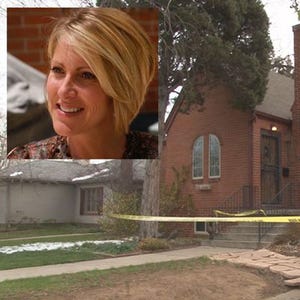DES MOINES — The time was about 6:30 a.m., Aug. 4.
A mother in eastern Polk County, Iowa, walked into her daughter’s room and couldn’t wake her up. She called 911.
Dispatcher Travis Bell, a 10-year veteran, was near the end of his overnight shift. He took the call and got the home address.
The next 12 minutes, 44 seconds became an intense struggle to save the life of a 16-year-old girl. Her desperate mother, counting aloud, used her hands to function as her daughter’s heart, guided by Bell’s calm, collected and encouraging tones.
Every second counts.
20 seconds after the call starts.
“OK, what’s going on there?” Bell asks.
23 seconds.
“I’ve just been trying to wake up my daughter … ” the mother says. “I’m not able to get a response from her.”
Bell gets the woman’s phone number. At the family’s request, The Des Moines Registeris not identifying the family or the daughter’s medical condition.
41 seconds.
“Is she breathing at all?” Bell asks.
The mother’s voice is calm, but trembles slightly in response: “Not that I can tell.”
48 seconds.
“Can you get her on the floor for me?” Bell asks.
“Come on sweetie,” she says, gently calling her daughter’s name.
1 minute, 4 seconds.
Bell says to his colleagues in fire and medic dispatch: “Incoming, unconscious not breathing.”
1 minute, 14 seconds.
“I have her on the floor,” the mother says.
“Can you tell if she’s breathing?” Bell asks.
The mother pauses for 10 seconds. She says it looks like there is a slight respiration.
Bell identifies this as ineffectual breathing. The girl’s heart isn’t pumping fast enough to distribute oxygen throughout her body. She is dying.
1 minute, 32 seconds.
Bell asks if the mother has an automatic external defibrillator, or AED, a device used to send an electric shock to jolt the heart back into function.
With an AED, chances of surviving a heart attack or other cardiac event grow to about 31%, according to a Centers for Disease Control and Prevention study from 2010.
Using solely cardiopulmonary resuscitation, or CPR, drops the survival rates. Those odds are about one in 10.
Medics dispatched from Altoona, Iowa, are about nine minutes away. CPR is all the mother, daughter and Bell have until they get there.
1 minute, 50 seconds.
Bell tells her to tilt her daughter’s neck to open the airway.
He then asks the mother to monitor her daughter’s breaths. They are too far apart. He begins to teach her how to do CPR.
2 minutes, 58 seconds.
“Place the heel of your hand on the breast bone right between the nipples,” Bell says. “Put the other hand on top of that. Pump the chest hard and fast — at least twice per second — about 2 inches deep. Let the chest come all the way up between pumps. We’re going to do this 600 times until we can get help there to take over.”
3 minutes, 26 seconds.
“Count out loud, so I can count with you, OK?” Bell instructs.
“One, two, three, four …” the mother says as she presses into her daughter’s chest, pushing blood through the heart and out toward the brain and extremities.
3 minutes, 42 seconds.
“I need you to go a little bit faster than that,” Bell prods.
“OK,” the mom says, “17, 18, 19, 20, 21, 22 …”
3 minutes, 59 seconds.
The mom says, “She’s starting to come to!”
“You’re doing good,” Bell says. “Just keep going, OK?”
4 minutes, 27 seconds.
The mother’s counting starts to become labored, her voice breathier.
“88, 89, 90, 91, 92 …”
5 minutes, 5 seconds.
“You said this is a house, right?” Bell asks, as the fire dispatcher guides medics to the home.
“Yes,” the mother replies. “151, 152, 153, 155 … and the door’s open … 175, 176, 177 …”
5 minutes, 33 seconds.
Fatigue is clearly setting in, but the mother keeps pressing. She is breathing hard. She skips counts, but she keeps at it.
“Doing good,” Bell says. “Just keep at it, all right?”
Minutes pass, and all that can be heard is a mother’s voice counting as she presses her hands into her daughter’s chest.
The mother gasps as she keeps pressing.
6 minutes, 29 seconds.
“Is there anybody else there with you?” Bell asks, perhaps sensing the fatigue.
“No, it’s just us,” the mother responds. And keeps on with the count.
7 minutes, 27 seconds.
“400, 1, 2, 3, 4 …”
8 minutes, 27 seconds.
“96, 97, 98, 99 … 400 …”
She’s got the count wrong. The mother is getting really tired. Bell just encourages her. “Keep going, OK? We’re getting closer.”
9 minutes, 39 seconds.
The mother finishes another 100 pumps.
“That’s actually 600, OK?” Bell says.
“OK, sorry,” the mother says. “Do you want me to completely stop, then?”
“No, just keep going, all right?” Bell says.
“Do I still count?” she asks.
“Yep, keep counting,” Bell responds.
10 minutes, 41 seconds.
The mother passes 700 compressions.
11 minutes, 15 seconds.
Sirens wail in the background. Help is close.
“They’re starting to come,” Bell says. “I want you to keep going until they’re in the room, though, all right?”
11 minutes 36 seconds.
The mother passes 800 compressions.
12 minutes.
There’s clattering inside the house.
“Hang on, honey,” the mother says to her daughter. She leaves to guide the medics into the room.
12 minutes, 8 seconds.
“Are they in there? Hello?” Bell asks.
12 minutes, 16 seconds.
“They’re here,” the mother says.
“OK,” Bell says. “I’m going to let you go. You did good.”
12 minutes, 44 seconds.
The 911 recording ends.
Soon after, Bell’s shift ended. He took his car for a scheduled oil change. The thought of that girl and her mother stayed with him.
“I was sitting in the waiting room at Stew Hansen’s, and I just about started crying,” said Bell, who studied criminal justice.
Bell applied at the Polk County Sheriff’s Office to be a dispatcher, thinking one day he would become a deputy. He found he liked dispatching.
But days like this one are rough.
“Dispatchers rarely get to find out how a call turns out,” said Lt. Jana Rooker, spokeswoman for the sheriff’s office. “It’s a very stressful job. A lot of people forget about them.”
A 2012 Southern Illinois University study looked at instances of post-traumatic stress disorder in emergency dispatchers. The biggest trigger was the unexpected death or injury of a child.
Not knowing what happened to that 16-year-old girl nagged at Bell. He repeatedly texted his co-workers on the day shift. Eventually, one of his friends was able to reach the Altoona medics. The girl had lived.
Bell was relieved. This is hardly the first time he’s had to instruct a caller on CPR. It’s a fairly common call for a dispatcher. But for Bell, this one was special: It was the only time it had worked.
“Most of the time I’ve done this, the patient was already dead,” Bell said later. “Those are bad days.”
Last month, Bell’s supervisor at Polk County asked him to hang around for a few minutes after work. All his boss said was, “It’s positive.”
In the dispatch office, Bell saw a woman and a daughter. He didn’t know who they were, but he had an idea.
It was the girl he helped saved. Mother and daughter hugged Bell.
The mother read a letter to Bell aloud.
“It is hard to put into words the gratitude that we feel concerning you and your actions the morning of Aug. 4, 2014,” the mother wrote. “That morning when I discovered our daughter, her body so still and her voice silenced, I was so afraid she had left us forever.”
She continued: “When you asked me to begin CPR, I began to panic as I did not remember what to do. You very gently led me through the proper steps and listened as I counted to over 800 compressions. You encouraged me and kept me on track. I know that you probably consider that you were just ‘doing your job,’ but to us you were the anchor that held us steady in the process of saving our daughter’s life.”
There were more hugs after that. Bell received a commendation from the sheriff’s office.
This was a good day.


